The mosaic decoration of the floor covers the entire porticoed corridor around the
peristyle
with a continuous strip of 162 squares decorated with a braided motif, with garlands of laurel leaves in the centre that frame
protomes
of wild animals.
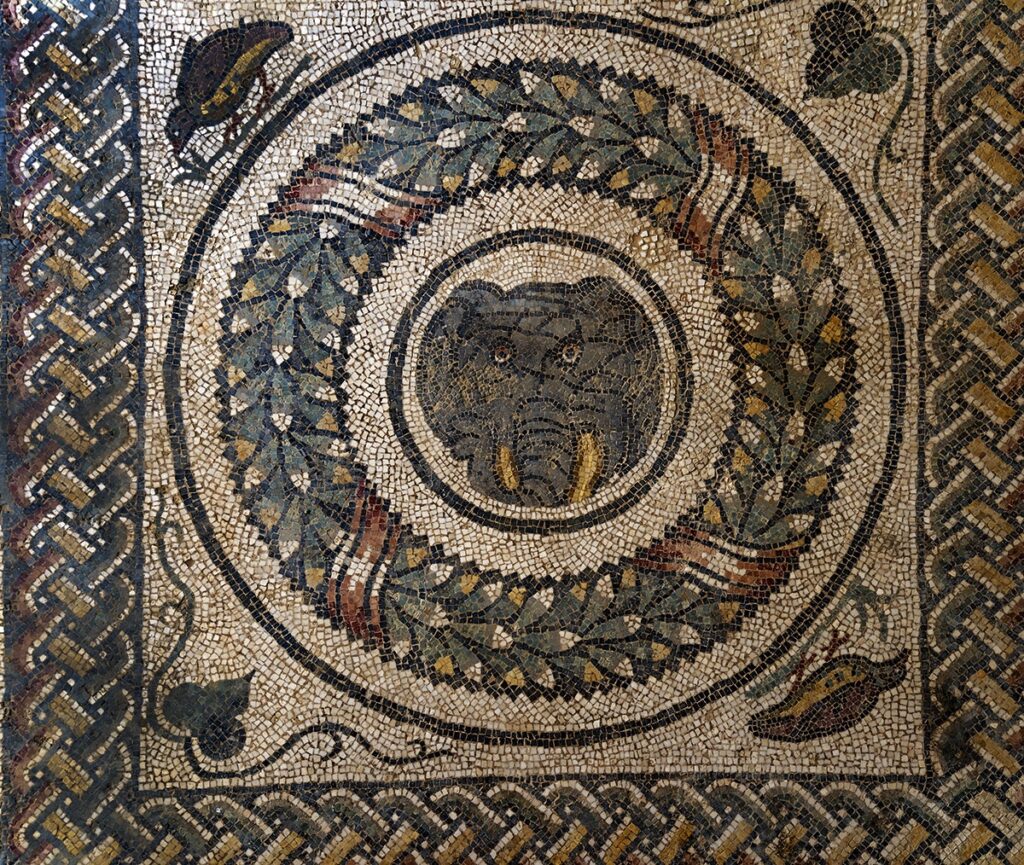 The squares are decorated at the edges with patterns of ivy leaves and birds; the archaeologist Gino Vinicio Gentili read, in these references, an
acrostic
The squares are decorated at the edges with patterns of ivy leaves and birds; the archaeologist Gino Vinicio Gentili read, in these references, an
acrostic
that might refer to the name of Maximian, Emperor of the Tetrarchic period, thought to be the source of the Villa’s imperial commission.
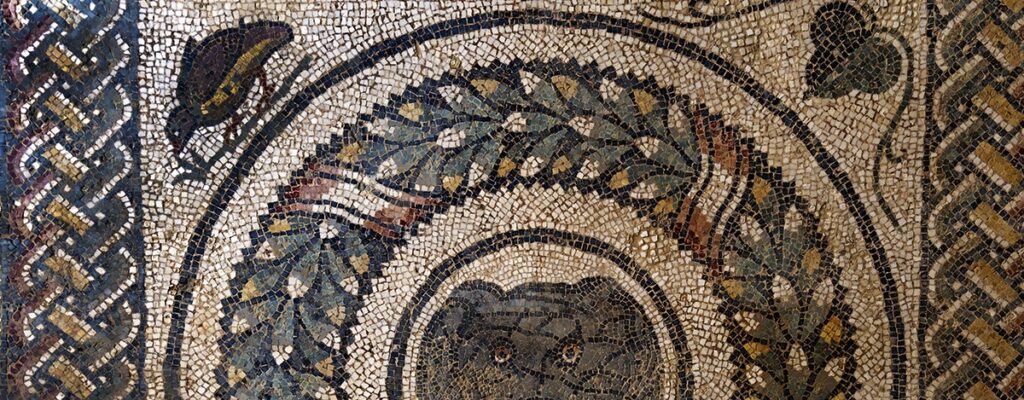 It should be noted that the composition of the squares and the direction of the protomes inside them are oriented, starting from the threshold of the
vestibule
It should be noted that the composition of the squares and the direction of the protomes inside them are oriented, starting from the threshold of the
vestibule
, in opposite ways,
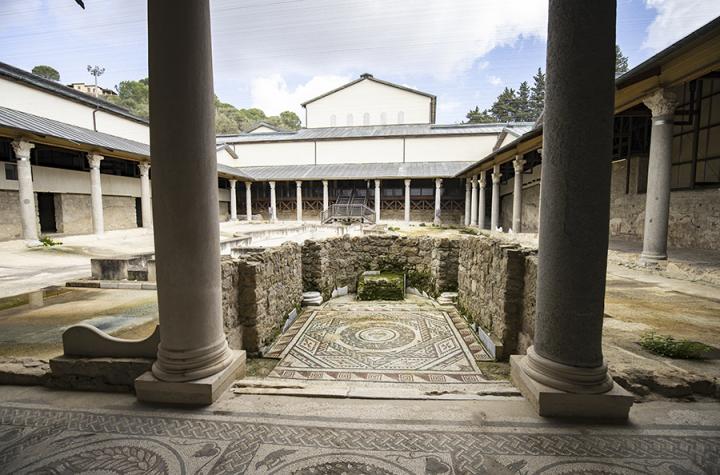 following the direction of the routes: the ascending route, for reception, to the right of the entrance, with a wider variety of animals depicted
following the direction of the routes: the ascending route, for reception, to the right of the entrance, with a wider variety of animals depicted 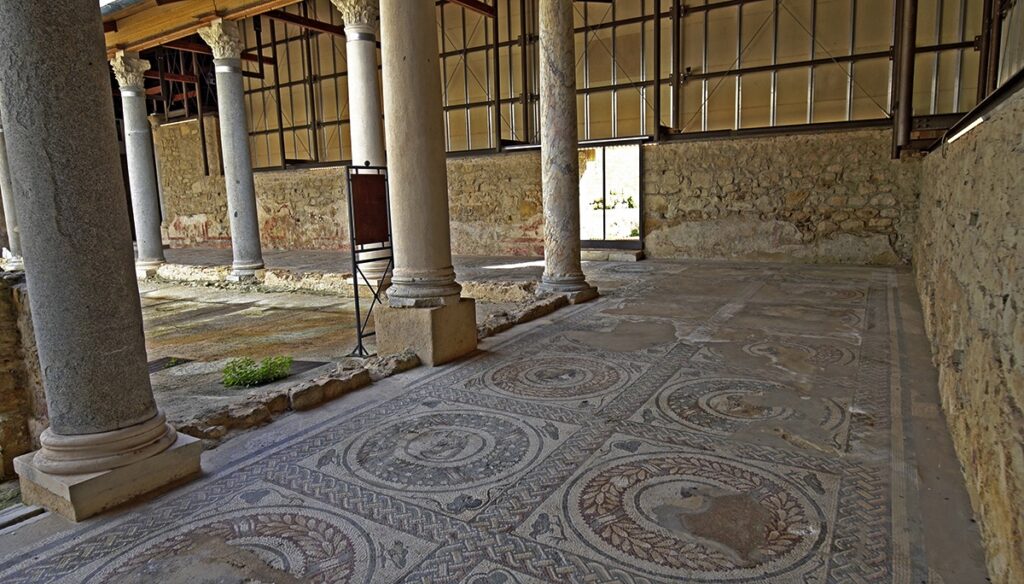 and the descending route, for service, to the left of the entrance.
and the descending route, for service, to the left of the entrance.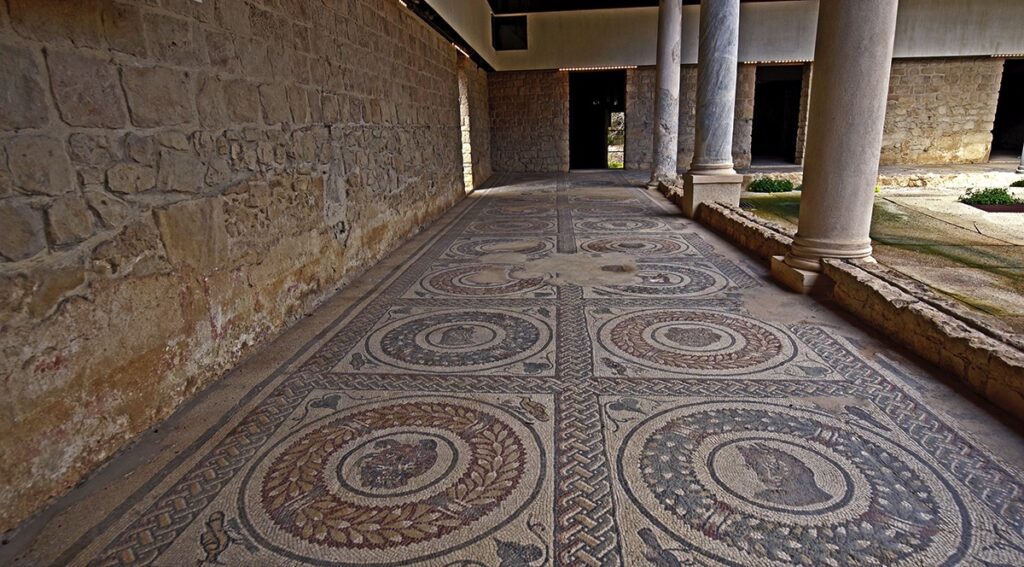 The subject of the animal protomes can also be found in other rooms, as in the case of the floor of the
xystus
The subject of the animal protomes can also be found in other rooms, as in the case of the floor of the
xystus
, which surrounds the
ovoid peristyle
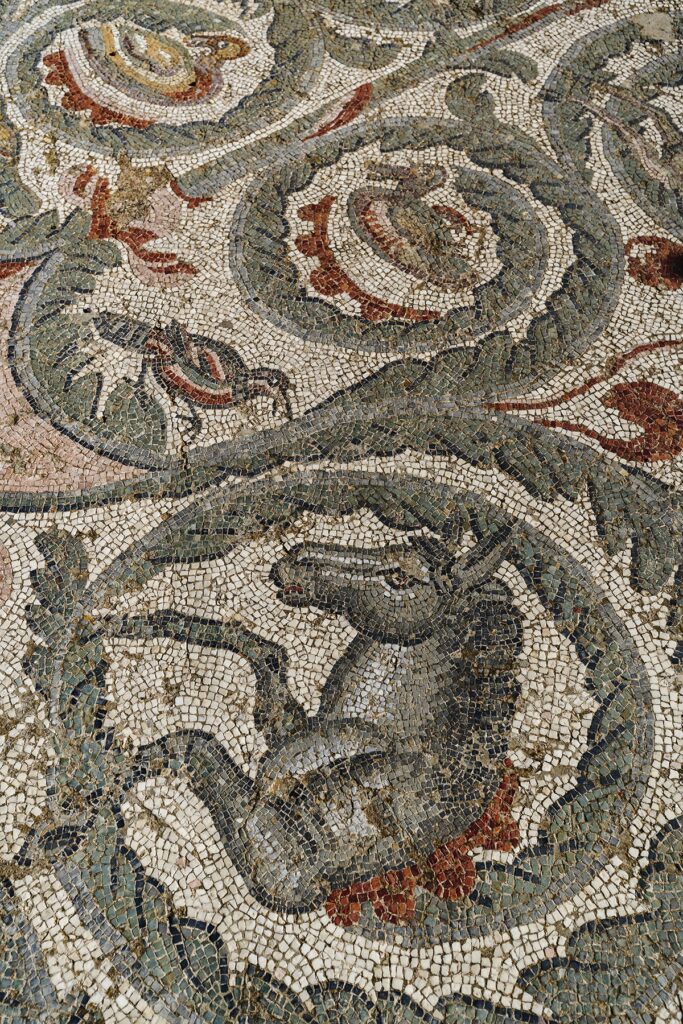 and the passage space which connects it to the quadrangular peristyle; in this case we can see a contour of acanthus leaves and an expressive form of decorations that dates these mosaics from the age of those in the main portico.
and the passage space which connects it to the quadrangular peristyle; in this case we can see a contour of acanthus leaves and an expressive form of decorations that dates these mosaics from the age of those in the main portico.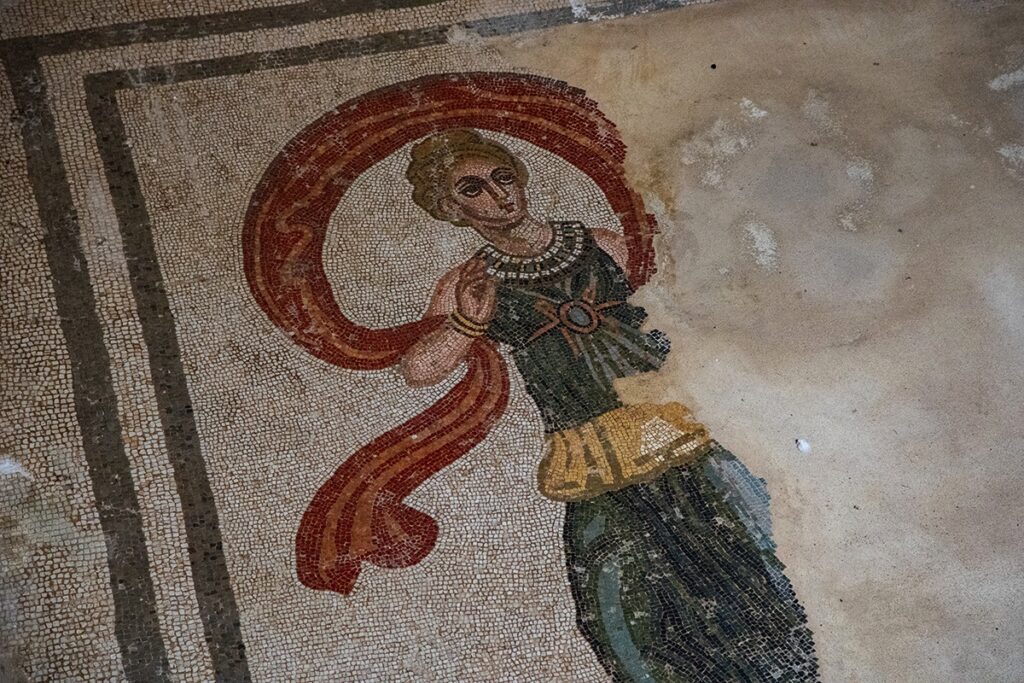 On the east side of the portico, adjacent to the steps leading to the corridor of the Great Hunt, a mosaic floor breaks off from the series of squares. The composition has a decorative device, named
rainbow style
On the east side of the portico, adjacent to the steps leading to the corridor of the Great Hunt, a mosaic floor breaks off from the series of squares. The composition has a decorative device, named
rainbow style
,
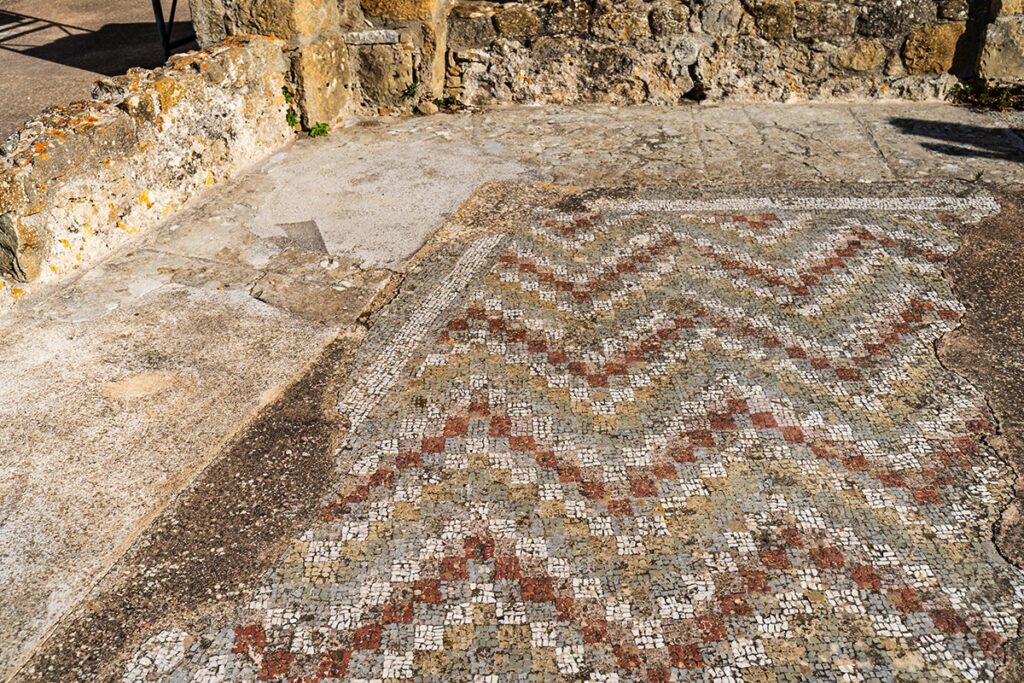 a recurring design in late antiquity mosaics. Adjacent to this is the depiction of a
kantharos
a recurring design in late antiquity mosaics. Adjacent to this is the depiction of a
kantharos
from which exit spirals with stalks of millet and ivy leaves, including a series of the Roman numerals II, III and IIII and the name
Bonifatius
.